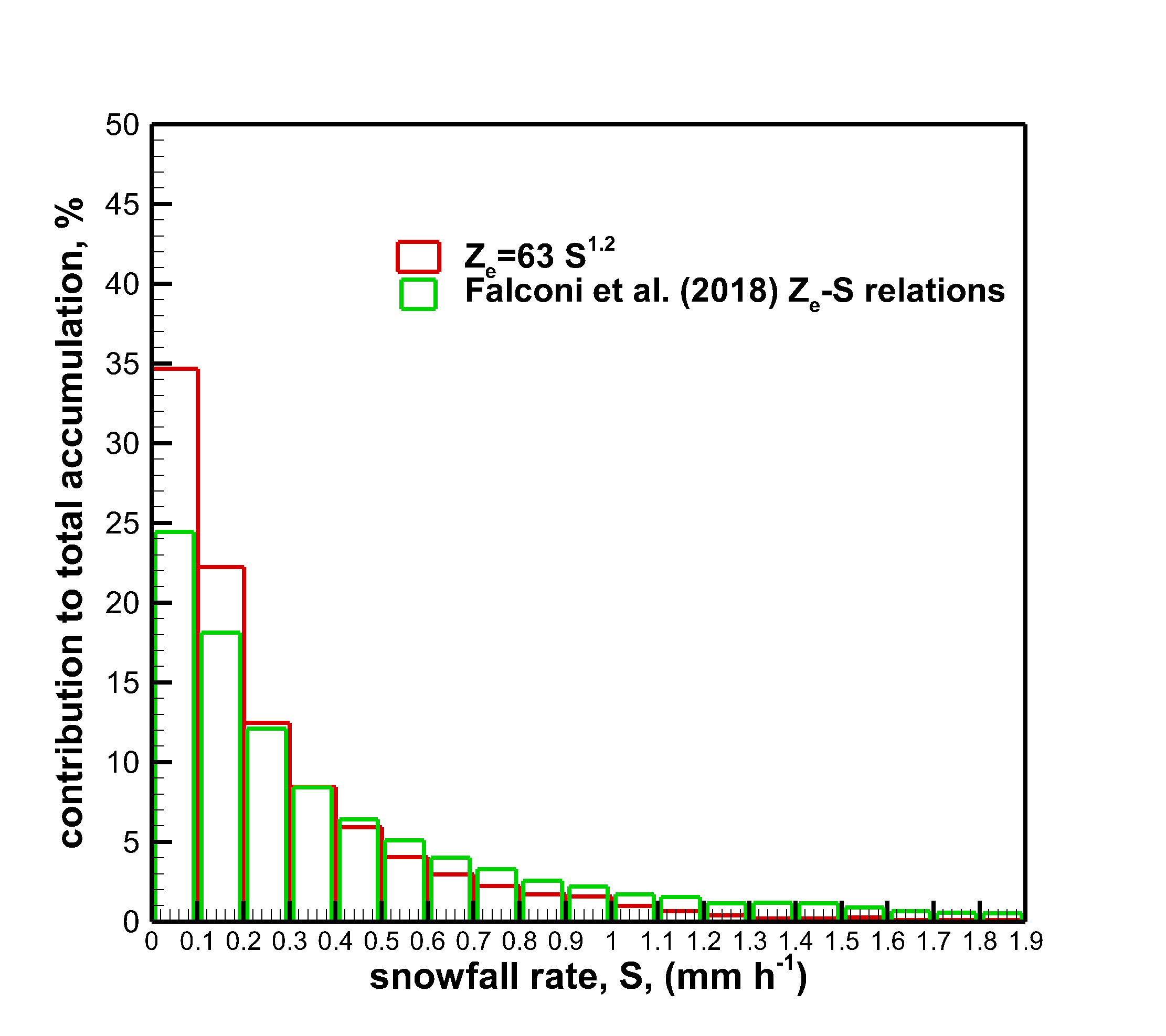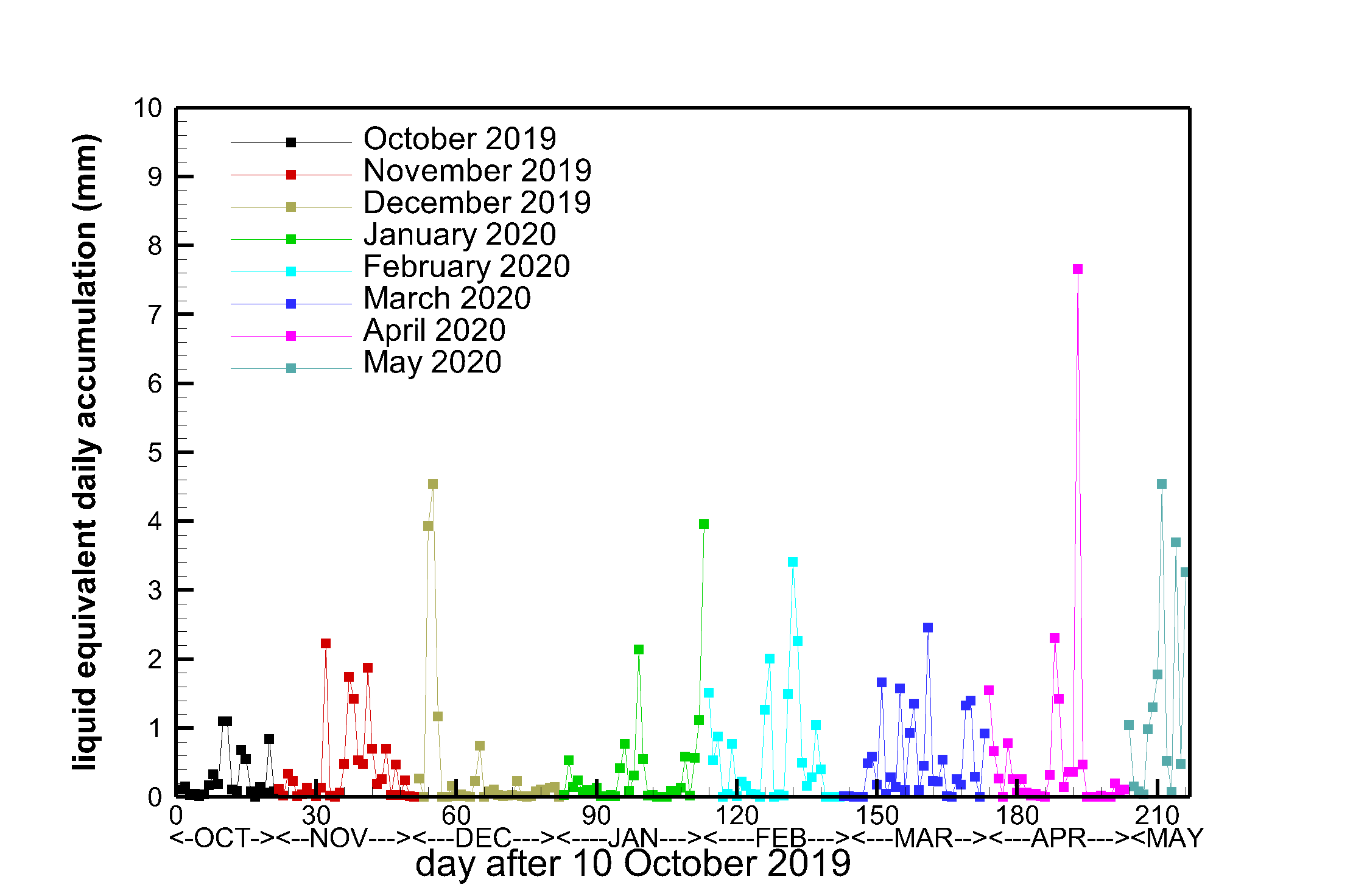High-temporal-resolution estimates of Central Arctic snowfall during the MOSAiC expedition
Submitter
Matrosov, Sergey — University of Colorado
Area of Research
Cloud Processes
Journal Reference
Matrosov S, M Shupe, and T Uttal. 2022. "High temporal resolution estimates of Arctic snowfall rates emphasizing gauge and radar-based retrievals from the MOSAiC expedition." Elementa: Science of the Anthropocene, 10(1), 000101, 10.1525/elementa.2021.00101.
Science

Figure 2. Relative contributions of snowfall of different rates to the total accumulation for the period from October 11, 2019 to May 14, 2020, according to the radar-based retrievals. From journal.

Figure 1. Radar-retrieved daily accumulations of snowfall during the MOSAiC drift. From journal.
Measurements of snowfall, which is a crucial element of the Earth climate system, has been extremely scarce in the Central Arctic. A number of snowfall sensors including gauges, optical sensors, and radars were deployed as part of the year-long Multidisciplinary drifting Observatory for the Study of Arctic Climate (MOSAiC) expedition that was undertaken during the October 2019–September 2020 time period. This study critically analyses data from these sensors and presents statistical results on snowfall rates and accumulation during the MOSAiC cold season precipitation period.
Impact
MOSAiC snowfall data fill a crucial gap in the solid precipitation measurements in the Central Arctic. A consistent radar-based MOSAiC snowfall product has been created and deposited into the Atmospheric Radiation Measurement (ARM) data center for the use of the scientific community (https://dx.doi.org/10.5439/1853942). This product can be used for climate studies and many other applications.
Summary
The cloud radar (35 GHZ)-based snowfall retrievals during the MOSAiC expedition were the most consistent in terms of data availability throughout the drift period. Unlike measurements from other snowfall sensors, the radar-based data were largely immune to effects of blowing snow. The radar retrievals were obtained using an enhanced remote-sensing technique, which was validated and tested against a high-quality reference precipitation gauge at another arctic location in Utqiagvik, Alaska. The total liquid-equivalent accumulation during the MOSAiC snow accumulation season (mid-October 2019–mid-May 2020) was around 110 mm, with more abundant precipitation observed during spring months. On 35 days, accumulation exceeded 1 mm. About half of the total accumulation came from weak snowfall with rates less than approximately 0.2 mm/h. While there are uncertainties (~30%) in the radar-based retrievals due to the choice of radar reflectivity-snowfall rate relations, the major potential error contributor is the uncertainty in the radar absolute calibration. The MOSAiC radar calibration was evaluated using comparisons with other radars and liquid water cloud–drizzle processes observed during summer.
Keep up with the Atmospheric Observer
Updates on ARM news, events, and opportunities delivered to your inbox
ARM User Profile
ARM welcomes users from all institutions and nations. A free ARM user account is needed to access ARM data.


















